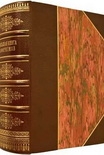Still Life Melissa Milgrom (notion reading list .txt) 📖

- Author: Melissa Milgrom
Book online «Still Life Melissa Milgrom (notion reading list .txt) 📖». Author Melissa Milgrom
As it happens, Colette and Ken met over a meal. Colette was waiting tables at Boston Pizza. Ken showed up and ordered a pie. She's been serving him deer and moose and bear ever since. When the kids were babies, Colette used to help Ken by sewing linings onto bear rugs. "I hate sewing with a passion," she says. "Now I work for a living. I don't need to do taxidermy." Even so, almost everyone around here defines her by Ken's celebrity. "I just went to a funeral, and I was talking to my cousin's wife. This is my family, and she says, 'Oh, you're Ken the taxidermist's wife!'"
Colette, who is allergic to deer hides and does not hunt, is the pragmatist of the family, the person who arranges Ken's paperwork at competition time so he can bring endangered species into the United States. cites permits take three to six weeks to process; without them, Ken won't clear customs. Border crossings are always stressful for the Walkers, and Ken is virtually helpless when it comes to filing permits and arranging inspection times. Colette calls him a zoo animal: cage him in, and he won't perform. "If he has to do the paperwork, nothing else will get done. It's all me, and because I don't know a lot of what he does, it's hard. So I have to call [the U.S.] Fish and Wildlife [Service] and get papers organized and whatnot, and then I have to do the Canadian part of it, and if they're not kept up, they expire," she says with a laughing-to-keep-from-crying grin. "For the Irish elk, all we'll need is our provincial papers, so that'll be an easy one. But I don't think that's all he's taking."
In spite of the financial hardship that comes with having a championship taxidermist for a spouse, the Walkers never want for fresh game. Sometimes, however, Colette needs other things, too, such as milk and toilet paper. One competition time, Colette discovered that she had run out of everything. When people in New York City say they have nothing to eat, it generally means they dislike what's in their pantry. For Ken and Colette, it means the cupboard is empty. As she put it, "No vegetables, no potatoes, no rice, no soup. Yeah, okay, we can eat roast after roast after roast and steak after steak. But you do need the milk and the bread and everything else in between, and there was nothing, and I actually had to call his mom and say, 'You know, there's no more shampoo. There's no more soap. There's no more toothpaste, no more toilet paper, no more paper towels. Nothing left in my cupboards!'"
It's not that Ken lacks work. Right now he had an entire safari in his freezer that needed mounting, and the Get Stuffed shop in London recently hired him for a gorilla. But those weren't megaloceros. "I don't care about money. That's my problem," he says, shaking his head. For that reason, I'd wanted to stay in a hotel, but Ken wouldn't hear of it: "It'll cost me more in gas to pick you up. And I've seen you drive. You don't want to drive on ice."
For dinner, Colette was preparing elk—a roast from one of the white elk Ken had shot and skinned at a game ranch south of Edmonton in order to make his Irish elk. Normally, when a customer orders meat from a game ranch, a butcher will prepare the meat, but Ken insisted on shooting and skinning his own elk. He needed the incisions to be properly made so that when he joined the pelts, the seams would disappear. Irish elk were massive, so Ken needed three white elk skins to make the cape of a single Irish elk. It took Ken and two other taxidermists six hours to skin four elk and a deer. They arrived at the game ranch at nine A.M. and were back in Alberta Beach, skinning out elk hooves and ears, by five that evening.
Re-Creations is a tricky category at the WTC. For years, the National Taxidermists Association refused to recognize its legitimacy. In Re-Creations, for instance, you can't use an elk to make an elk; you have to use a different species. Otherwise, it's not a re-creation. For the same reason, you can't make a prairie chicken out of a prairie chicken or a lobster out of a lobster. You can, however, use a chicken to make an eagle or a lizard to make a snake. Irish elk weren't actually elk; they were deer. Their closest living relative is the fallow deer, a much smaller species, with which it shares 90 percent of the same DNA. So it's perfectly legal for Ken to use an elk to make an "elk" that was a deer.
It's a good thing he wasn't competing with a vulture or a domestic cat, because Colette was now serving us hot slices of roast re-creation Megaloceros giganteus. This competition mount was heavenly.
Dinnertime, as it happens, was when Ken's five siblings used to ask young Ken about taxidermy. They found his approach to nature baffling and told him so. They said that someone who loves animals should not kill them. It became a Walker family refrain. "They had a mindset that I should not kill things. My mindset was totally different," he says.
Ken owns four guns. He believes that gun control is like communism: "great on paper." "In Canada, there aren't enough noncompliance laws. There aren't enough prisons to arrest us all," he explains. If it weren't for hunters who manage animals, he adds, species would be depleted by farmers (who find them a nuisance), by indigenous people (who





Comments (0)